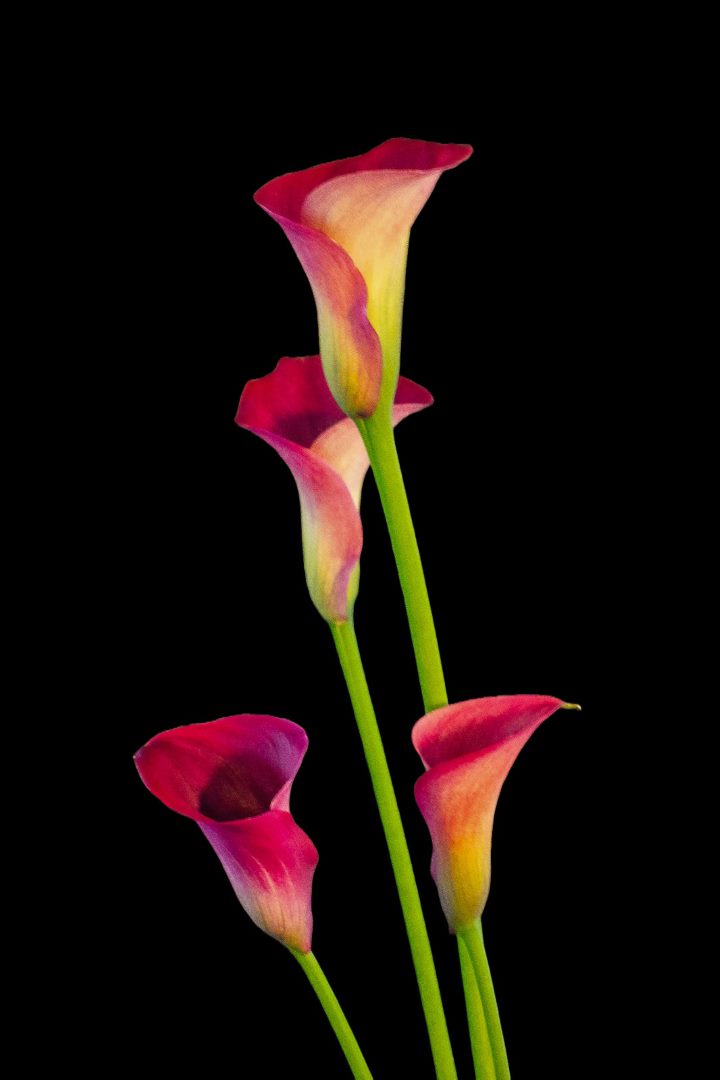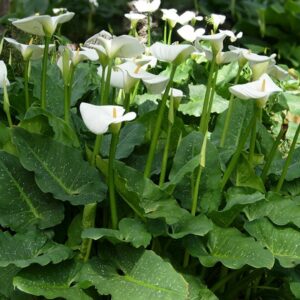Your cart is currently empty!
Glass Calla Lily Flowers: A Comprehensive Guide

What are Glass Calla Lilies?
Glass calla lilies, also known as arum lilies or calla lilies, are elegant and striking flowering plants. They belong to the genus Zantedeschia, which includes species native to southern and eastern Africa. Glass calla lilies are popular for their large, showy trumpet-shaped flowers that resemble calla lilies but are made of a thin, translucent, and papery material. These unique flowers add a touch of sophistication and beauty to any garden or indoor space.
Varieties of Glass Calla Lilies
There are numerous varieties of glass calla lilies, each with its distinct color, shape, and size. Some popular varieties include:
- ‘Pink Persuasion’: Soft pink flowers with a white border
- ‘Captain Nemo’: Dark purple flowers with a black throat
- ‘Green Goddess’: Chartreuse-green flowers
- ‘Picasso’: Multicolored flowers with white, yellow, and purple stripes
li>‘Odessa’: Pure white flowers with a slight fragrance
Growing Glass Calla Lilies
Planting
Glass calla lilies are typically grown as annuals or tender perennials in most climates. They prefer well-drained, fertile soil with a pH of 6.0 to 7.0. Choose a location that receives full sun to partial shade. Plant the corms (bulb-like structures) 2-3 inches deep and 6-8 inches apart.
Watering
Water glass calla lilies regularly, especially during hot and dry weather. Allow the soil to dry out slightly before watering again. Avoid overwatering, as this can lead to root rot.
Fertilizing
Feed glass calla lilies with a balanced fertilizer every 2-3 weeks during the growing season. Use a fertilizer specifically formulated for flowering plants.
Temperature
Glass calla lilies thrive in warm temperatures between 60-75°F (15-24°C). Protect them from frost and cold temperatures.
Care and Maintenance
Deadheading
Remove spent flowers to encourage new blooms. Deadheading also prevents the plant from putting energy into seed production.
Dividing
Glass calla lily corms can be divided every 2-3 years to create new plants. Dig up the corms in the fall or spring and separate them carefully. Replant the corms in fresh soil.
Winter Protection
In areas with cold winters, glass calla lilies may need to be protected from frost. Dig up the corms in the fall and store them in a cool, dry place. Alternatively, you can mulch around the plants heavily to insulate the corms.
Uses of Glass Calla Lilies
Glass calla lilies are versatile flowers that can be used in a variety of ways:
- Cut Flowers: The large, showy flowers are perfect for arrangements and bouquets.
- Container Plants: Glass calla lilies can be grown in containers for patios, balconies, and indoor spaces.
- Garden Plants: They make a stunning addition to flower beds and borders.
- Wedding Decor: The elegant flowers are often used in bridal bouquets and centerpieces.
- Symbolism: Glass calla lilies symbolize purity, innocence, and transformation.
Troubleshooting Common Problems
Glass calla lilies are generally easy to care for, but they may encounter some common problems:
- Yellowing leaves: This can be a sign of overwatering or lack of nutrients. Adjust watering and fertilize regularly.
- Brown spots on leaves: This may indicate a fungal disease. Remove infected leaves and treat with a fungicide.
- Stunted growth: This can be caused by insufficient sunlight, poor soil conditions, or cold temperatures.
- No flowers: Glass calla lilies require warm temperatures and adequate sunlight to produce flowers. Ensure the plant is receiving the appropriate conditions.
Conclusion
Glass calla lilies are beautiful and versatile flowers that can add a touch of elegance and style to any garden or home. With proper care and maintenance, these striking plants will thrive and provide years of enjoyment. Whether you choose to grow them in the ground or in containers, glass calla lilies are sure to impress.








Leave a Reply